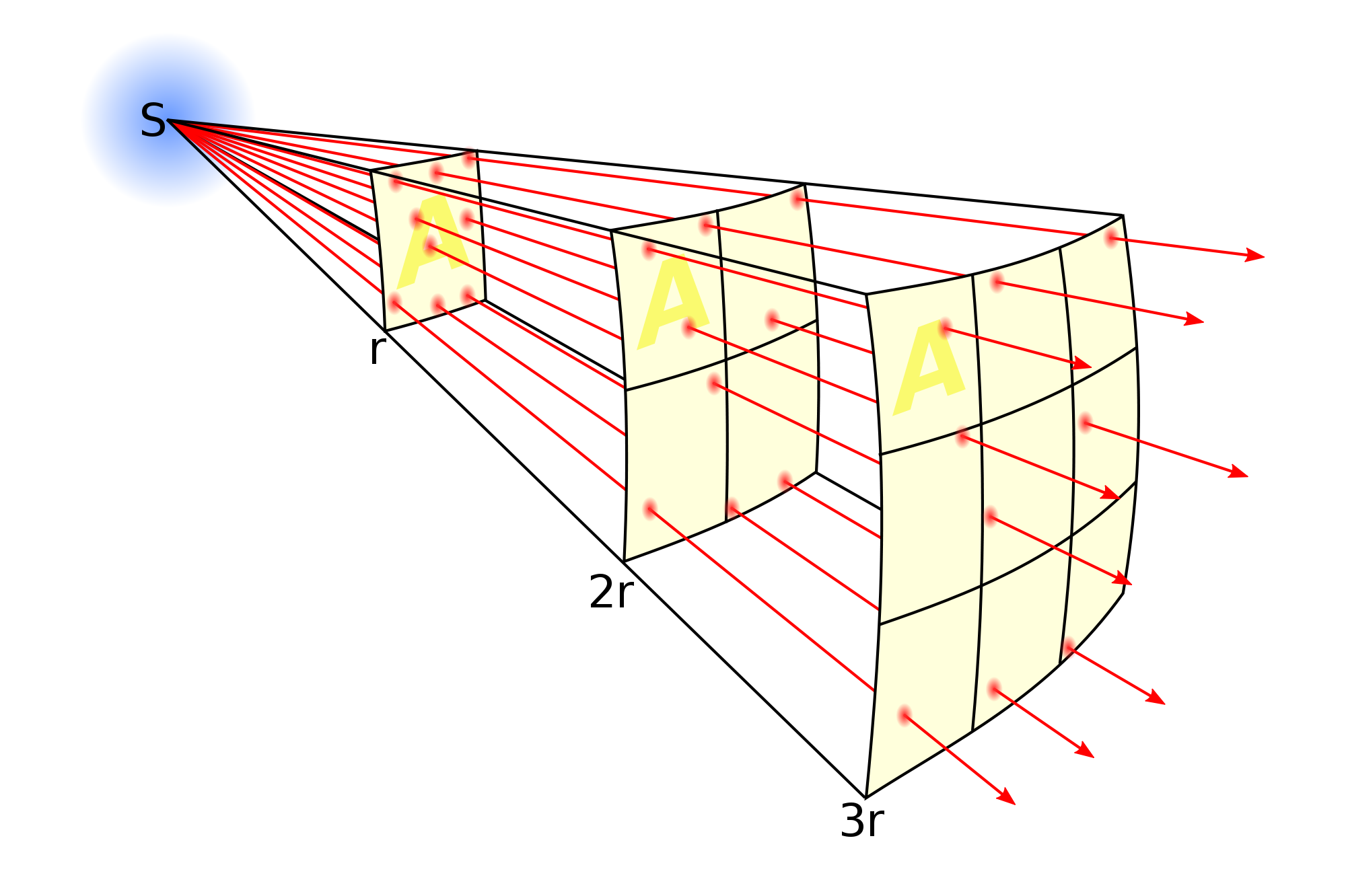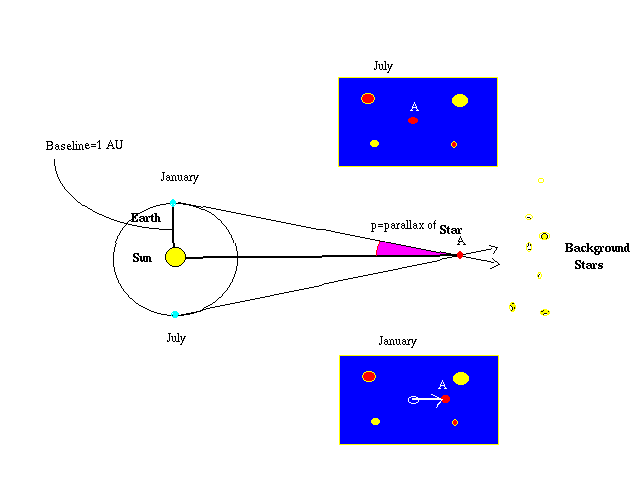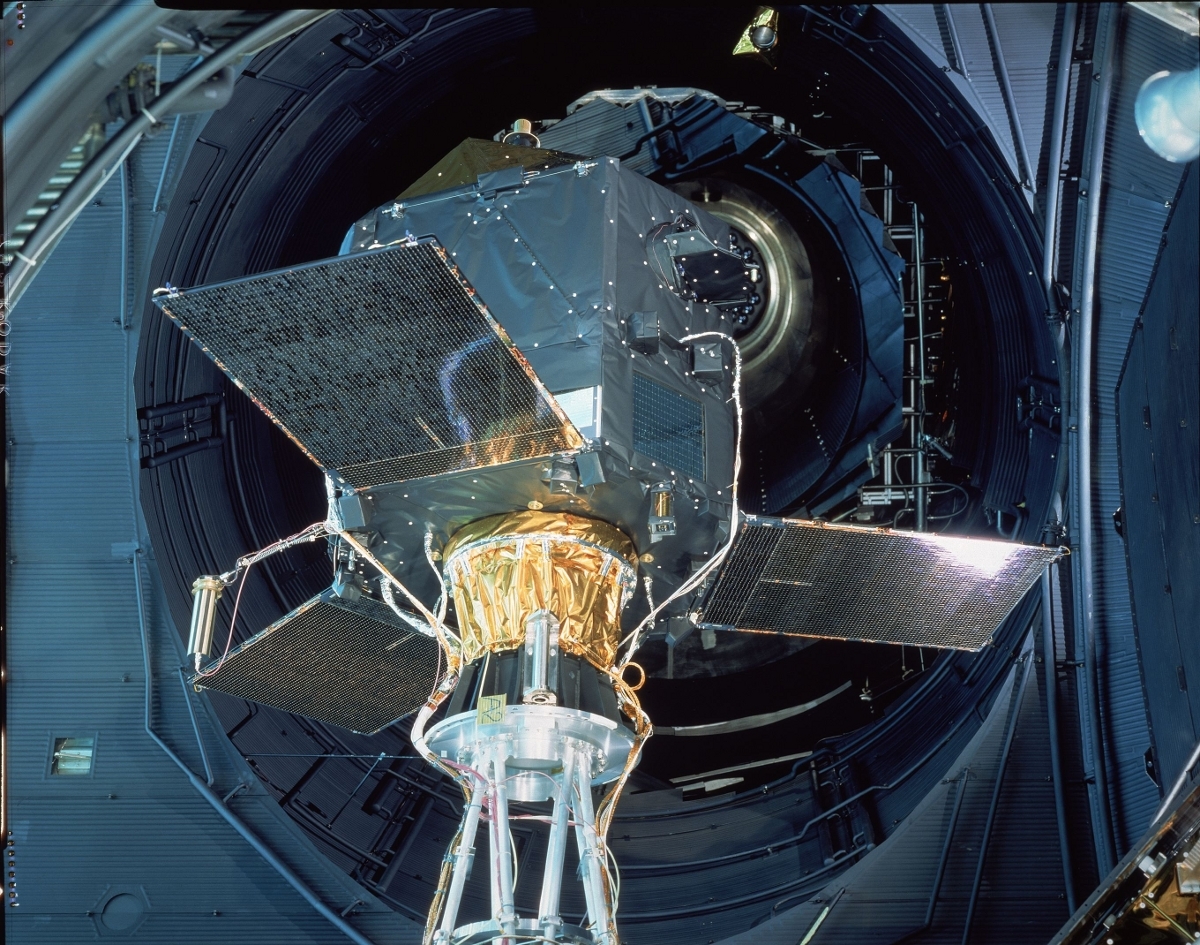Chapter 12: Properties of Stars
Chapter 1
How Science Works
- The Scientific Method
- Evidence
- Measurements
- Units and the Metric System
- Measurement Errors
- Estimation
- Dimensions
- Mass, Length, and Time
- Observations and Uncertainty
- Precision and Significant Figures
- Errors and Statistics
- Scientific Notation
- Ways of Representing Data
- Logic
- Mathematics
- Geometry
- Algebra
- Logarithms
- Testing a Hypothesis
- Case Study of Life on Mars
- Theories
- Systems of Knowledge
- The Culture of Science
- Computer Simulations
- Modern Scientific Research
- The Scope of Astronomy
- Astronomy as a Science
- A Scale Model of Space
- A Scale Model of Time
- Questions
Chapter 2
Early Astronomy
- The Night Sky
- Motions in the Sky
- Navigation
- Constellations and Seasons
- Cause of the Seasons
- The Magnitude System
- Angular Size and Linear Size
- Phases of the Moon
- Eclipses
- Auroras
- Dividing Time
- Solar and Lunar Calendars
- History of Astronomy
- Stonehenge
- Ancient Observatories
- Counting and Measurement
- Astrology
- Greek Astronomy
- Aristotle and Geocentric Cosmology
- Aristarchus and Heliocentric Cosmology
- The Dark Ages
- Arab Astronomy
- Indian Astronomy
- Chinese Astronomy
- Mayan Astronomy
- Questions
Chapter 3
The Copernican Revolution
- Ptolemy and the Geocentric Model
- The Renaissance
- Copernicus and the Heliocentric Model
- Tycho Brahe
- Johannes Kepler
- Elliptical Orbits
- Kepler's Laws
- Galileo Galilei
- The Trial of Galileo
- Isaac Newton
- Newton's Law of Gravity
- The Plurality of Worlds
- The Birth of Modern Science
- Layout of the Solar System
- Scale of the Solar System
- The Idea of Space Exploration
- Orbits
- History of Space Exploration
- Moon Landings
- International Space Station
- Manned versus Robotic Missions
- Commercial Space Flight
- Future of Space Exploration
- Living in Space
- Moon, Mars, and Beyond
- Societies in Space
- Questions
Chapter 4
Matter and Energy in the Universe
- Matter and Energy
- Rutherford and Atomic Structure
- Early Greek Physics
- Dalton and Atoms
- The Periodic Table
- Structure of the Atom
- Energy
- Heat and Temperature
- Potential and Kinetic Energy
- Conservation of Energy
- Velocity of Gas Particles
- States of Matter
- Thermodynamics
- Entropy
- Laws of Thermodynamics
- Heat Transfer
- Thermal Radiation
- Wien's Law
- Radiation from Planets and Stars
- Internal Heat in Planets and Stars
- Periodic Processes
- Random Processes
- Questions
Chapter 5
The Earth-Moon System
- Earth and Moon
- Early Estimates of Earth's Age
- How the Earth Cooled
- Ages Using Radioactivity
- Radioactive Half-Life
- Ages of the Earth and Moon
- Geological Activity
- Internal Structure of the Earth and Moon
- Basic Rock Types
- Layers of the Earth and Moon
- Origin of Water on Earth
- The Evolving Earth
- Plate Tectonics
- Volcanoes
- Geological Processes
- Impact Craters
- The Geological Timescale
- Mass Extinctions
- Evolution and the Cosmic Environment
- Earth's Atmosphere and Oceans
- Weather Circulation
- Environmental Change on Earth
- The Earth-Moon System
- Geological History of the Moon
- Tidal Forces
- Effects of Tidal Forces
- Historical Studies of the Moon
- Lunar Surface
- Ice on the Moon
- Origin of the Moon
- Humans on the Moon
- Questions
Chapter 6
The Terrestrial Planets
- Studying Other Planets
- The Planets
- The Terrestrial Planets
- Mercury
- Mercury's Orbit
- Mercury's Surface
- Venus
- Volcanism on Venus
- Venus and the Greenhouse Effect
- Tectonics on Venus
- Exploring Venus
- Mars in Myth and Legend
- Early Studies of Mars
- Mars Close-Up
- Modern Views of Mars
- Missions to Mars
- Geology of Mars
- Water on Mars
- Polar Caps of Mars
- Climate Change on Mars
- Terraforming Mars
- Life on Mars
- The Moons of Mars
- Martian Meteorites
- Comparative Planetology
- Incidence of Craters
- Counting Craters
- Counting Statistics
- Internal Heat and Geological Activity
- Magnetic Fields of the Terrestrial Planets
- Mountains and Rifts
- Radar Studies of Planetary Surfaces
- Laser Ranging and Altimetry
- Gravity and Atmospheres
- Normal Atmospheric Composition
- The Significance of Oxygen
- Questions
Chapter 7
The Giant Planets and Their Moons
- The Gas Giant Planets
- Atmospheres of the Gas Giant Planets
- Clouds and Weather on Gas Giant Planets
- Internal Structure of the Gas Giant Planets
- Thermal Radiation from Gas Giant Planets
- Life on Gas Giant Planets?
- Why Giant Planets are Giant
- Gas Laws
- Ring Systems of the Giant Planets
- Structure Within Ring Systems
- The Origin of Ring Particles
- The Roche Limit
- Resonance and Harmonics
- Tidal Forces in the Solar System
- Moons of Gas Giant Planets
- Geology of Large Moons
- The Voyager Missions
- Jupiter
- Jupiter's Galilean Moons
- Jupiter's Ganymede
- Jupiter's Europa
- Jupiter's Callisto
- Jupiter's Io
- Volcanoes on Io
- Saturn
- Cassini Mission to Saturn
- Saturn's Titan
- Saturn's Enceladus
- Discovery of Uranus and Neptune
- Uranus
- Uranus' Miranda
- Neptune
- Neptune's Triton
- Pluto
- The Discovery of Pluto
- Pluto as a Dwarf Planet
- Dwarf Planets
- Questions
Chapter 8
Interplanetary Bodies
- Interplanetary Bodies
- Comets
- Early Observations of Comets
- Structure of the Comet Nucleus
- Comet Chemistry
- Oort Cloud and Kuiper Belt
- Kuiper Belt
- Comet Orbits
- Life Story of Comets
- The Largest Kuiper Belt Objects
- Meteors and Meteor Showers
- Gravitational Perturbations
- Asteroids
- Surveys for Earth Crossing Asteroids
- Asteroid Shapes
- Composition of Asteroids
- Introduction to Meteorites
- Origin of Meteorites
- Types of Meteorites
- The Tunguska Event
- The Threat from Space
- Probability and Impacts
- Impact on Jupiter
- Interplanetary Opportunity
- Questions
Chapter 9
Planet Formation and Exoplanets
- Formation of the Solar System
- Early History of the Solar System
- Conservation of Angular Momentum
- Angular Momentum in a Collapsing Cloud
- Helmholtz Contraction
- Safronov and Planet Formation
- Collapse of the Solar Nebula
- Why the Solar System Collapsed
- From Planetesimals to Planets
- Accretion and Solar System Bodies
- Differentiation
- Planetary Magnetic Fields
- The Origin of Satellites
- Solar System Debris and Formation
- Gradual Evolution and a Few Catastrophies
- Chaos and Determinism
- Extrasolar Planets
- Discoveries of Exoplanets
- Doppler Detection of Exoplanets
- Transit Detection of Exoplanets
- The Kepler Mission
- Direct Detection of Exoplanets
- Properties of Exoplanets
- Implications of Exoplanet Surveys
- Future Detection of Exoplanets
- Questions
Chapter 10
Detecting Radiation from Space
- Observing the Universe
- Radiation and the Universe
- The Nature of Light
- The Electromagnetic Spectrum
- Properties of Waves
- Waves and Particles
- How Radiation Travels
- Properties of Electromagnetic Radiation
- The Doppler Effect
- Invisible Radiation
- Thermal Spectra
- The Quantum Theory
- The Uncertainty Principle
- Spectral Lines
- Emission Lines and Bands
- Absorption and Emission Spectra
- Kirchoff's Laws
- Astronomical Detection of Radiation
- The Telescope
- Optical Telescopes
- Optical Detectors
- Adaptive Optics
- Image Processing
- Digital Information
- Radio Telescopes
- Telescopes in Space
- Hubble Space Telescope
- Interferometry
- Collecting Area and Resolution
- Frontier Observatories
- Questions
Chapter 11
Our Sun: The Nearest Star
- The Sun
- The Nearest Star
- Properties of the Sun
- Kelvin and the Sun's Age
- The Sun's Composition
- Energy From Atomic Nuclei
- Mass-Energy Conversion
- Examples of Mass-Energy Conversion
- Energy From Nuclear Fission
- Energy From Nuclear Fusion
- Nuclear Reactions in the Sun
- The Sun's Interior
- Energy Flow in the Sun
- Collisions and Opacity
- Solar Neutrinos
- Solar Oscillations
- The Sun's Atmosphere
- Solar Chromosphere and Corona
- Sunspots
- The Solar Cycle
- The Solar Wind
- Effects of the Sun on the Earth
- Cosmic Energy Sources
- Questions
Chapter 13
Star Birth and Death
- Star Birth and Death
- Understanding Star Birth and Death
- Cosmic Abundance of Elements
- Star Formation
- Molecular Clouds
- Young Stars
- T Tauri Stars
- Mass Limits for Stars
- Brown Dwarfs
- Young Star Clusters
- Cauldron of the Elements
- Main Sequence Stars
- Nuclear Reactions in Main Sequence Stars
- Main Sequence Lifetimes
- Evolved Stars
- Cycles of Star Life and Death
- The Creation of Heavy Elements
- Red Giants
- Horizontal Branch and Asymptotic Giant Branch Stars
- Variable Stars
- Magnetic Stars
- Stellar Mass Loss
- White Dwarfs
- Supernovae
- Seeing the Death of a Star
- Supernova 1987A
- Neutron Stars and Pulsars
- Special Theory of Relativity
- General Theory of Relativity
- Black Holes
- Properties of Black Holes
- Questions
Chapter 14
The Milky Way
- The Distribution of Stars in Space
- Stellar Companions
- Binary Star Systems
- Binary and Multiple Stars
- Mass Transfer in Binaries
- Binaries and Stellar Mass
- Nova and Supernova
- Exotic Binary Systems
- Gamma Ray Bursts
- How Multiple Stars Form
- Environments of Stars
- The Interstellar Medium
- Effects of Interstellar Material on Starlight
- Structure of the Interstellar Medium
- Dust Extinction and Reddening
- Groups of Stars
- Open Star Clusters
- Globular Star Clusters
- Distances to Groups of Stars
- Ages of Groups of Stars
- Layout of the Milky Way
- William Herschel
- Isotropy and Anisotropy
- Mapping the Milky Way
- Questions
Chapter 15
Galaxies
- The Milky Way Galaxy
- Mapping the Galaxy Disk
- Spiral Structure in Galaxies
- Mass of the Milky Way
- Dark Matter in the Milky Way
- Galaxy Mass
- The Galactic Center
- Black Hole in the Galactic Center
- Stellar Populations
- Formation of the Milky Way
- Galaxies
- The Shapley-Curtis Debate
- Edwin Hubble
- Distances to Galaxies
- Classifying Galaxies
- Spiral Galaxies
- Elliptical Galaxies
- Lenticular Galaxies
- Dwarf and Irregular Galaxies
- Overview of Galaxy Structures
- The Local Group
- Light Travel Time
- Galaxy Size and Luminosity
- Mass to Light Ratios
- Dark Matter in Galaxies
- Gravity of Many Bodies
- Galaxy Evolution
- Galaxy Interactions
- Galaxy Formation
- Questions
Chapter 16
The Expanding Universe
- Galaxy Redshifts
- The Expanding Universe
- Cosmological Redshifts
- The Hubble Relation
- Relating Redshift and Distance
- Galaxy Distance Indicators
- Size and Age of the Universe
- The Hubble Constant
- Large Scale Structure
- Galaxy Clustering
- Clusters of Galaxies
- Overview of Large Scale Structure
- Dark Matter on the Largest Scales
- The Most Distant Galaxies
- Black Holes in Nearby Galaxies
- Active Galaxies
- Radio Galaxies
- The Discovery of Quasars
- Quasars
- Types of Gravitational Lensing
- Properties of Quasars
- The Quasar Power Source
- Quasars as Probes of the Universe
- Star Formation History of the Universe
- Expansion History of the Universe
- Questions
Chapter 17
Cosmology
- Cosmology
- Early Cosmologies
- Relativity and Cosmology
- The Big Bang Model
- The Cosmological Principle
- Universal Expansion
- Cosmic Nucleosynthesis
- Cosmic Microwave Background Radiation
- Discovery of the Microwave Background Radiation
- Measuring Space Curvature
- Cosmic Evolution
- Evolution of Structure
- Mean Cosmic Density
- Critical Density
- Dark Matter and Dark Energy
- Age of the Universe
- Precision Cosmology
- The Future of the Contents of the Universe
- Fate of the Universe
- Alternatives to the Big Bang Model
- Space-Time
- Particles and Radiation
- The Very Early Universe
- Mass and Energy in the Early Universe
- Matter and Antimatter
- The Forces of Nature
- Fine-Tuning in Cosmology
- The Anthropic Principle in Cosmology
- String Theory and Cosmology
- The Multiverse
- The Limits of Knowledge
- Questions
Chapter 18
Life On Earth
- Nature of Life
- Chemistry of Life
- Molecules of Life
- The Origin of Life on Earth
- Origin of Complex Molecules
- Miller-Urey Experiment
- Pre-RNA World
- RNA World
- From Molecules to Cells
- Metabolism
- Anaerobes
- Extremophiles
- Thermophiles
- Psychrophiles
- Xerophiles
- Halophiles
- Barophiles
- Acidophiles
- Alkaliphiles
- Radiation Resistant Biology
- Importance of Water for Life
- Hydrothermal Systems
- Silicon Versus Carbon
- DNA and Heredity
- Life as Digital Information
- Synthetic Biology
- Life in a Computer
- Natural Selection
- Tree Of Life
- Evolution and Intelligence
- Culture and Technology
- The Gaia Hypothesis
- Life and the Cosmic Environment
Chapter 19
Life in the Universe
- Life in the Universe
- Astrobiology
- Life Beyond Earth
- Sites for Life
- Complex Molecules in Space
- Life in the Solar System
- Lowell and Canals on Mars
- Implications of Life on Mars
- Extreme Environments in the Solar System
- Rare Earth Hypothesis
- Are We Alone?
- Unidentified Flying Objects or UFOs
- The Search for Extraterrestrial Intelligence
- The Drake Equation
- The History of SETI
- Recent SETI Projects
- Recognizing a Message
- The Best Way to Communicate
- The Fermi Question
- The Anthropic Principle
- Where Are They?
Measuring Star Distances
The use of the light-year and parsec to measure stellar distances gives a sense of the vast distances to the stars. To ancient cultures, however, the stars seemed relatively close to Earth. The Egyptians imagined them as points of light on a tented canopy, held up by mountain ranges at the corners of the kingdom. The Greeks thought of them as fiery embers carried overhead on crystalline spheres. Ancient cultures could not conceive of distances much larger than the size of the Earth. Even to a modern-day observer, the stars in the night sky all look to be at the same distance – the depth of space is not obvious.

Early distance estimates were no more than educated guesses. In the late 17th century, Dutch scientist Christian Huygens made an image of the Sun through a pinhole in a darkened room. He varied the size of the pinhole until the image seemed equal in brightness to an image of Sirius, the brightest star. Since the pinhole admitted 1/27,000 of the light of the Sun, Huygens concluded that Sirius was 27,000 times farther away than the Sun (it is actually 543,900 times farther away and substantially more luminous than the Sun). Around the same time, Issac Newton tried to use Saturn as a sort of reflecting mirror to measure the intensity of sunlight. He guessed the percentage of the Sun's light that Saturn reflects and assumed that bright stars have similar absolute brightness to the Sun. Newton concluded that the bright stars are about 18,000 times farther away than the Sun (which is simply wrong, for the same reason Huygen was wrong; neither of them knew that most bright stars in the night sky are intrinsically much brighter than the Sun).

Both these men were trying to use a crude method for estimating the distance of stars; inverse square law for the propagation of light. The brightest stars have values of apparent brightness that are about 10 billion (or 1010) times fainter than the Sun. Unfortunately, the relative brightness of the Sun and other stars is impossible to measure accurately without equipment. Mistakes continued into more modern times. In 1829, English scientist William Wollaston used the inverse square law to estimate that most typical stars must be at least 100,000 (or 105) times more distant than the Sun, since the inverse square law indicates that dimming 10 billion times corresponds to increasing distance 100,000 times (which is accurate for some stars).
Simple distance estimates based on the relative brightness of the Sun and the stars are flawed for one simple reason: stars come in many luminosities. The brightest stars in the sky are much more luminous than the Sun, so they are much more distant than we would calculate by assuming that they resemble the Sun. Also, these estimates only give typical distances rather than accurate distances for individual stars. Even so, this is an example of how a simple physical idea — the way that light dims as it spreads through space — can be used to deduce remarkable information about the distance to the stars. Galileo used this reasoning when he pointed his telescope at the Milky Way and saw the gauzy light resolve into many pinpoints of light. Guessing that they were all stars like the Sun, he recognized the enormous three-dimensional depth of space. At the time, this reasoning implied a universe thousands of times larger than previous estimates!


One of the greatest delays in switching from a geocentric to a heliocentric model of the solar system was in part tied to the lack of an observable motion in the stars — a measurable stellar parallax — as the Earth orbited. It meant that the stars must be fantastically distant. The first successful measurement of stellar parallax did not come until 1838 when German astronomer Friedrich Bessel detected the slight seasonal shift of the star 61 Cygni — only two-thirds of a second of arc. The measurement of a parallax distance is a direct trigonometric technique that is independent of any assumption about the nature of the star being observed. Recall that parallax is the angular shift in the position of an object caused by a shift in the observer's position. The calculation of a parallax distance is another application of the small angle equation. The distance is inversely proportional to the parallax angle. A star with a parallax angle of 1 arc second is at a distance of 1 parsec.

To understand how parallax measurements are made, hold your finger in front of your face and look past it toward a bookcase on the other side of the room. Your finger represents a nearby star — the books on the far wall represent distant stars. Your right eye represents the view on one side of the Sun. Your left eye represents the view six months later, after the Earth has traveled to a point on the opposite side of the Sun (a shift in the Earth's position by 2 A.U. as seen from the star). First wink one eye and then the other. Your finger (the nearby star) seems to shift back and forth. Hold your finger only a few centimeters from your eyes; the shift is large. Hold your finger at arm's length; the shift is smaller. Likewise, the farther away the nearby star, the smaller the parallax angle. The parallax in this experiment can be measured in degrees, but the parallaxes of actual stars are all ten thousand times smaller - less than a second of arc! Parallaxes as small as 1/100 second of arc can be reliably measured, and the distance of such a star is 100 parsecs.

The distance of a star in parsecs is simply the inverse of its parallax angle in seconds of arc. This explains the origin of the term parsec: it is the distance to a parallax of one second of arc. If a star is too distant, its parallax is too small to be measured. (Try winking your eyes to see the shift of a distant object against an even further horizon — at some distance, you will not notice a shift anymore.) Parallaxes smaller than about 1/100 second of arc are difficult to measure accurately, due to the blurring of the Earth's atmosphere. Therefore stars farther away than about 100 parsecs are beyond the distance limit for reliable parallaxes.
Scientists at the European Space Agency attempted to overcome this limitation when they launched the Hipparcos satellite in 1989. Its mission was to measure parallax in the precise viewing conditions of space. The unfortunate failure of a rocket motor placed the satellite in a highly elliptical orbit, which caused the detectors to degrade as they passed repeatedly through the radiation belts around the Earth. Despite this handicap, Hipparcos successfully measured the parallax of 120,000 stars. In addition to parallaxes, it accurately measured the motions of those stars, giving us information about how they were moving, if they were multiple star systems and if they varied in luminosity with time. More recently, ESA launched the Gaia mission, to greatly improve the sample size and accuracy of parallax measurements. Gaia aims to construct a 3D map of nearly a billion stars, reaching an accuracy of 20 millionths of an arc second. That's the angle subtended by the width of a human hair at a distance of 300 kilometers!
Knowing accurate distances is the most important requirement for measuring most other properties of stars. This means that the estimated 20,000 to 25,000 stars that lie within 100 parsecs are our main statistical sample for measuring stellar properties. Note that even this large sample is not sufficient for us to be able to measure the distance to certain rare stellar types. Other techniques have been devised for estimating distances to more remote stars, but they all depend ultimately on the accuracy of the parallax measures of nearby stars.

